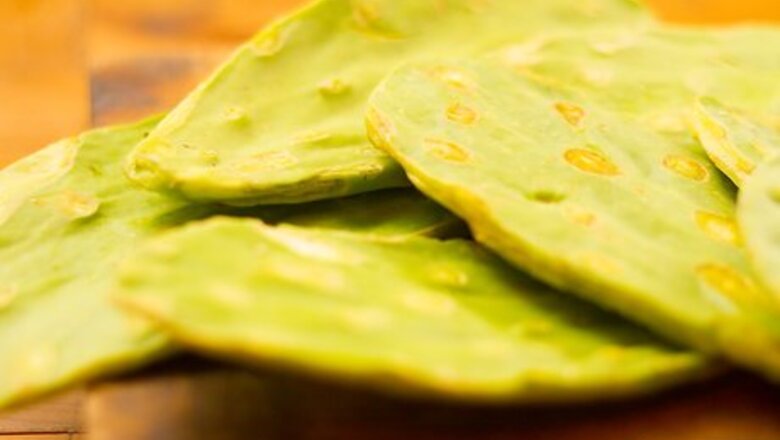
views
Pads or Nopales
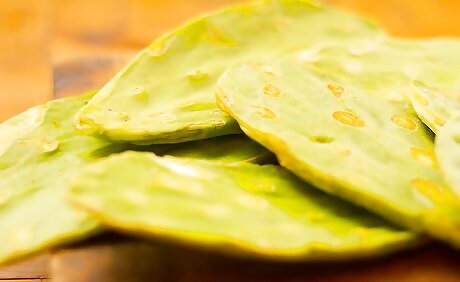
Buy or forage some prickly pear pads. See Warnings. There's a reason it's called the prickly pear cactus. Find pads that are bright green and firm. Small, young pads harvested in early spring are thought to be the most succulent, delicate in flavor, and have the fewest spines. The thicker a pad, the older it is. Older pads tend to be stringy and their sap will be thicker, which some people find unpleasant. Leave those for other species who use them as survival food during lean foraging seasons. The tender pads are sometimes sold as "baby nopales". If you're harvesting them yourself, wear extremely heavy gloves or use tongs. Snap the pads off the plant or cut at the stem. Cutting at the stem reduces stress on the pad, and allows the cactus to recover more quickly than snapping or tearing the pad away. This helps keep your cactus plant healthy for future harvests.
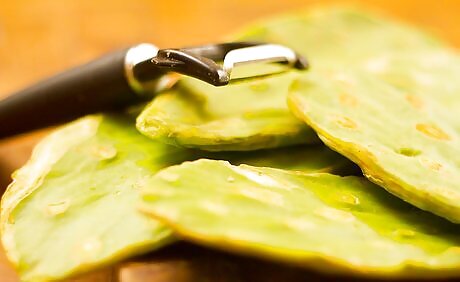
Remove the spines from the pad by using a vegetable peeler or a paring knife. Don't take off the gloves until the pads are completely rinsed and the peeled remnants are cleared. The pads not only have large spines, but there are also tiny, invisible and far more irritating spines called glochids that are extremely difficult to remove from the skin. The spines and glochids can also be removed from the prickly pear pads by burning them off with a small torch or by placing the pad on a gas burner and turning it with tongs. See Warnings.
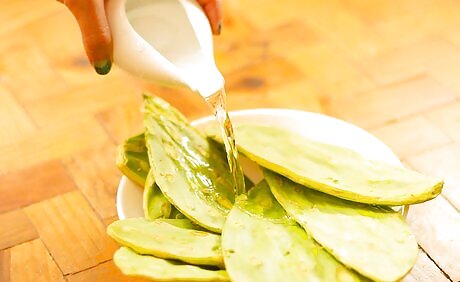
Run the pad under cool water. Peel or cut off any discolorations or bruises.
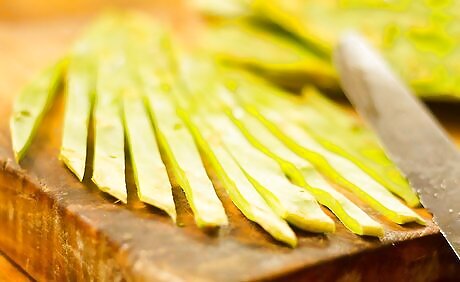
Slice or cut the pads (wipe the knife blade after each slice, as there can be small spines sticking to it), or leave them whole, depending on what you will be using the nopales for.
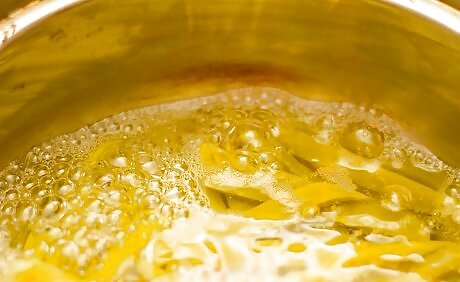
Cook the nopales. They can be either boiled or grilled, as well as mixed with other ingredients to make unique, satisfying and healthy dishes. If you boil the nopales, you may sometimes have to drain and re-boil them once or twice, depending on how thick the sap is. The thicker the pad, the thicker the sap. Boiling them with a copper coin (an old Mexican "veinte") is a common remedy to thin the sap and make it more palatable to unaccustomed diners. The boiled nopales are then drained, washed off with cold water and served as a salad with finely diced tomatoes, onion, cilantro and jalapeños and seasoned with vinegar, salt and lime juice. If you grill the nopales, you might want to coat generously with pepper, salt, and other spices. They're ready when they're tender and slightly browned. Grilled nopalitos strips can be seasoned with fresh lime juice and a little olive oil. You can also add grilled portobello mushrooms to the mix. Try stirring the cooked nopales into soup, mixing them into a salad or omelet, pickling them, or eating them alone. A popular and traditional Mexican dish is "nopalitos en salsa verde", where the nopales are cut in strips and boiled in water (see above), and then re-cooked in the traditional sauce made of tomatillos (which are sometimes mistaken for green tomatoes, but are actually a completely different fruit that grow in a papery husk), onion, garlic, cilantro and jalapeño chiles (puree the sauce ingredients in a blender and then bring to a boil and simmer). This is usually eaten in a soft tortilla as a taco or with chips.
Prickly Pear

Buy or harvest some prickly pears. The pears with the reddish-orange or purple skin and deep purple interiors are considered to be the sweetest, but the white-skinned varieties are more popular in Mexico. Store-bought prickly pears are usually spine-free and sometimes can be handled with your bare hands. Unprocessed pears still have glochids that will drive you crazy if you get some on your skin. Just to be sure, always use tongs or at least a plastic bag as a glove. If you're foraging for prickly pears, remember that while all pears are edible, only a few will actually be ripe and taste good. Get them when they are bright purple and look like rat food, just before starting to wrinkle.
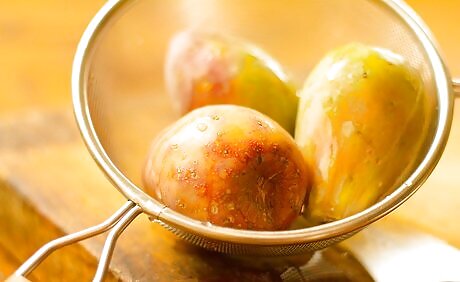
Remove the spines. Place the pears in a plastic colander five or six at a time under cold water. Swirl the pears around for about three or four minutes not bruising them. Doing this washes all the fine blond hairs away, now you can handle them prickly free.
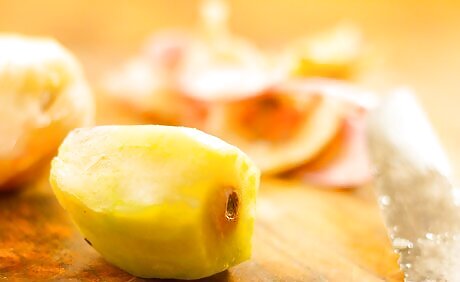
Skin the pears. All the hairs gone slice off the thicker skin at both ends of the prickly pear (the bottom and the top). It takes a little practice to know how much to slice off. Generally, you want to take off the skin without getting at the seed-filled center. Cut lengthwise along the pear's top-bottom centerline just through the skin. Using that slit, use the knife to lever the skin and peel it off of the rest of the pear.

Cut the pear into slices, or stick onto a fork or skewer and serve. The flesh of the prickly pear can be used to make jam, jelly, sorbet, wine, and "cactus candy." The seeds can be consumed with the fruit (but be careful not to bite into them, as they're quite hard) or spit out. Some people eat the seeds in soup or dry them to be ground into flour.
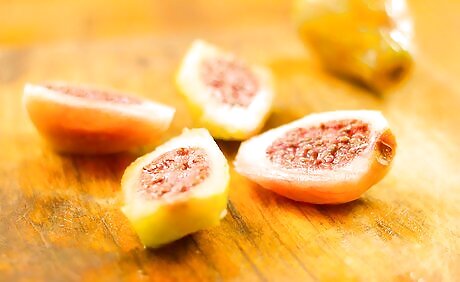
Finished.













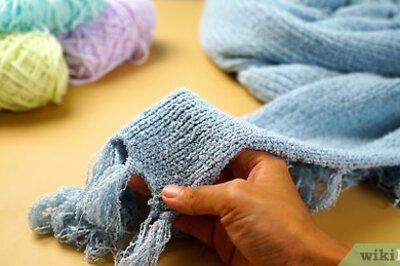






Comments
0 comment